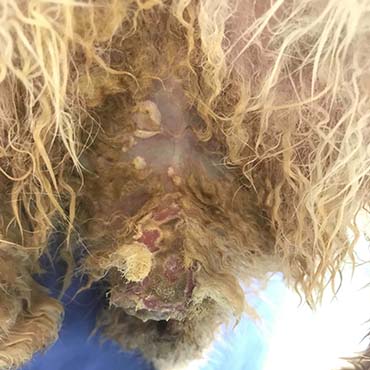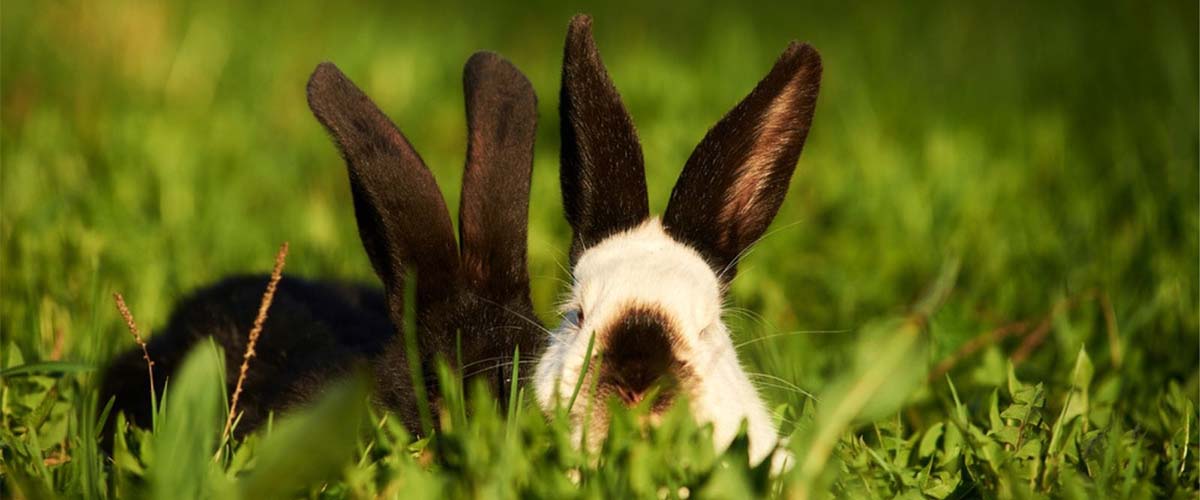Urine Scald, Dirty Bottoms and How to Clean a Rabbit
Overview
- Rabbits are naturally clean animals that spend a lot of time grooming, they only tend to develop a mucky bottom if they are unwell, unable to groom themselves, or if they live in a dirty environment.
- Having a dirty bottom can lead to serious problems such as skin infections and fly strike.
- Check your rabbits’ bottoms daily and contact your vet if you notice any problems.
- If your vet has asked you to clean your rabbit, check out our video below.
What causes dirty bottoms and urine scald in rabbits?
Rabbits are naturally hygienic animals that groom regularly to stay clean and healthy. If your rabbit has developed a dirty bottom, or urine scalding (raw skin caused by urine-soaked fur) it’s likely to be a sign that something is wrong. Common causes include:
- Dental disease - this can make grooming very difficult and painful (sometimes impossible).
- A poor diet - a poor diet can quickly lead to digestive problems and soft stools. Check out our feeding guide for rabbits.
- Arthritis - arthritis is a painful condition of the joints that can make grooming very difficult. It can also make moving around painful, which means rabbits suffering from it are more likely to sit in their own pee/poo.
- Obesity - overweight rabbits often struggle to clean themselves and tend to move around less/sit in dirty bedding.
- Diarrhoea - if your rabbit has diarrhoea, they are very likely to develop a dirty bottom, especially if they are feeling too unwell to groom.
- A dirty environment - if your rabbit lives in a dirty environment they will struggle to stay clean and dry.
- Urine problems – if your rabbit has a urine problem, such as an infection or bladder stones, they might start leaking urine and develop urine scald around their backend.

When to contact your vet
It’s important to have your rabbit checked by your vet if you notice they have a dirty bottom and/or urine scald. It’s likely to be painful, and they are at risk of developing further complications such as skin infections and flystrike. It will help if you can tell your vet about any other symptoms you’ve noticed, for example:
- Trouble eating/a painful mouth
- Reduced appetite
- Weight loss or weight gain
- Soft faeces or diarrhoea
- Poor coat condition
- Low energy/hiding away/being quieter than usual
Treatment
If your rabbit has a very dirty bottom or urine scald, it’s likely that they will need to be clipped, cleaned and dried by your vet (usually under anaesthetic). They may also need antibiotics, anti-inflammatories/pain relief, and a barrier cream for the sore area of skin. You will then need to keep your rabbit on clean, dry bedding whilst their skin heals. Ideally use bedding that doesn’t stick to them such as washable towels or puppy pads.
Your rabbit will also need some treatment for whatever caused them to develop their dirty bottom and/or urine scald. Follow the links above for more information
 Video found at youtu.be/4TNyJJJKrBM
Video found at youtu.be/4TNyJJJKrBM
If your vet asks you to clean your rabbit at home follow the steps below:
- Put a bath mat or towel down to stop your rabbit from slipping, then ask someone to gently hold them on top of it.
- Most of the time, it’s their bottom that needs washing, so hold their front end up whilst supporting their back end. Never turn them on their back, as this will scare them. Read our advice on 'How to hold your rabbit'
- Prepare a bowl of lukewarm water making sure it’s no hotter than the temperature of your hand and gently pour it over the dirty fur using a sponge or flannel.
- Soak the fur until the dirt is soft and can be easily removed with a sponge or soft brush. If the dirt isn’t loose, soak it for longer, don’t pull it. If you need to use shampoo, make sure it’s rabbit safe, and that you rinse it off properly afterwards.
- Be as quick as you can so your rabbit doesn’t get stressed or cold, if it’s taking too long, stop and continue another time.
- Only use a shampoo or product if it’s been recommended by your vet. It’s important to follow your vet’s instructions carefully because the wrong product could make the problem worse.
- Only ever use a shower head if it has an extremely gentle flow, you’re sure the temperature of the water won’t change, and you have somewhere safe to hold them.
- Once you’ve finished, wrap your rabbit in a towel and dry them off as much as possible, then if it’s a cold day put them somewhere warm, away from draughts until they’re dry.
WARNINGS:
- Never clean your rabbit unless it’s absolutely necessary – it can be very stressful for them.
- Never attempt to trim any clumps of dirty fur away as it’s very easy to tear a rabbit’s skin this way. Contact your vet for advice if you’re struggling.
- Never put your rabbit’s head underwater.
Published: January 2023
Did you find this page useful?
Tell us more
Please note, our vets and nurses are unable to respond to questions via this form. If you are concerned about your pet’s health, please contact your vet directly.
Thank you for your feedback
Want to hear more about PDSA and get pet care tips from our vet experts?
Sign up to our e-newsletter
Written by vets and vet nurses. This advice is for UK pets only. Illustrations by Samantha Elmhurst.

